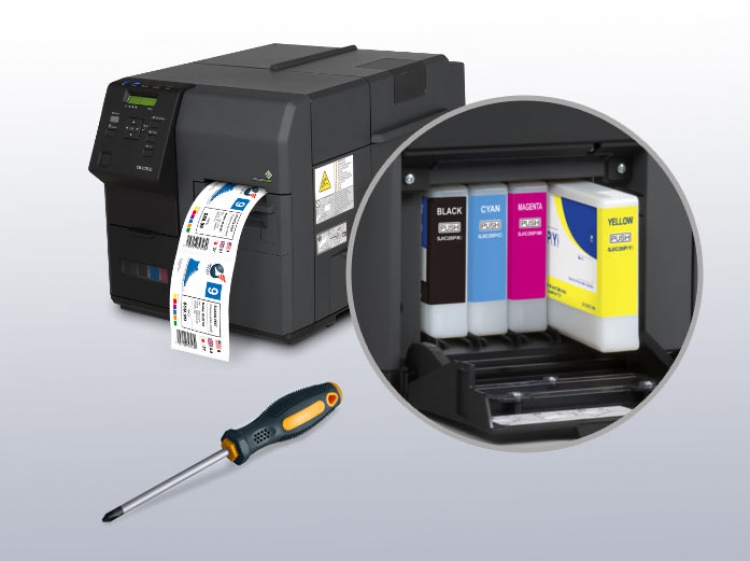A color label printer can be a tremendous asset to a company. Rather than considering only the price and feature set of a particular brand or model, here are six overlooked tips during the discovery and purchase phase:
1. Determine the price of the labels and ink as the initial step.
This is most important, to make sure there are no surprises. I’ve had folks purchase equipment from others then call me to try to find inexpensive labels. For ink jet printing, the materials need to have a primer so that the ink dries quickly. Ink cost can be estimated by considering the size of the label and required ink coverage. It's also helpful to find out how often the printer requires printhead nozzle cleaning. Some brands chew through a ton of ink during their "automatic" cleaning cycles, which sometimes isn't even necessary.
2. Find out the printhead cost and typical life of the printhead.
Epson claims their printheads are built to last the life of the printer, whereas other brands often require thousands of dollars for printhead replacements over the life of the printer. Epson also has determined that their printer life is a mere 5 years. Try telling that to a SMB who invested $50K in several color label printers.
3. Determine exactly what the warranty covers or doesn’t cover.
Read the fine print of the warranty section and ask any questions to your reseller.
4. Consider the distribution channel and long-term viability and stability of the manufacturer.
Currently, there are a ton of color label printer distributors on the market. Who actually makes their equipment? What is their relationship with the manufacturer? What sized investments have been made in the company recently? Will they be around in 5 years? Sometimes the bigger they are the harder they fall.
5. Consider the overall required durability and longevity of the labels.
Most of the ink jet units such as Memjet utilize dye-based ink. The ink will not hold up in water or demanding environments. Other printers utilize pigment-based inks which are much more durable. And now a few models offer hybrid capability to print either type of ink. Still overall, there is a tradeoff between beauty (dye-based) and durability (pigment-based).
Toner-based laser printer options have been making a comeback since changing over to LED. Less heat with LED means a longer fuser life and the ability to print on more materials such as polypropylene films. Other more demanding applications may require laminated labels for ultra-durability.
6. Consider an on-site service plan, for mission critical applications.
Does the printer company have enough market presence to offer on-site repairs? What is the turnaround time? Do they offer loaner units?
Paying attention to the above tips will negate after-purchase surprises, and better secure your investment. George Righter has 30 years of industry experience and can help you choose the correct label printers for your requirements. Contact George at 215-493-7191 or email info@rightertrack.com
Published:


